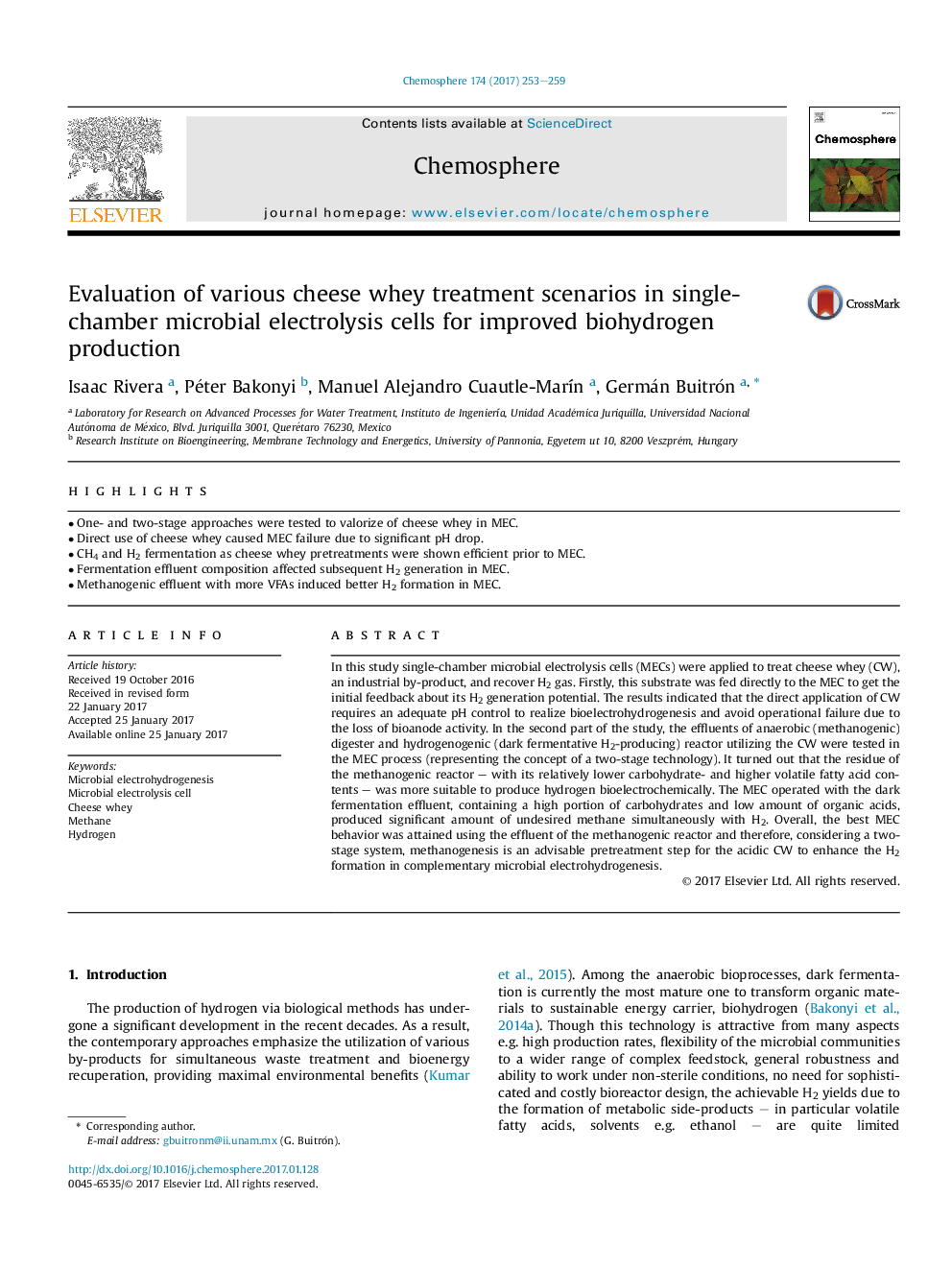| کد مقاله | کد نشریه | سال انتشار | مقاله انگلیسی | نسخه تمام متن |
|---|---|---|---|---|
| 5747363 | 1618797 | 2017 | 7 صفحه PDF | دانلود رایگان |
- One- and two-stage approaches were tested to valorize of cheese whey in MEC.
- Direct use of cheese whey caused MEC failure due to significant pH drop.
- CH4 and H2 fermentation as cheese whey pretreatments were shown efficient prior to MEC.
- Fermentation effluent composition affected subsequent H2 generation in MEC.
- Methanogenic effluent with more VFAs induced better H2 formation in MEC.
In this study single-chamber microbial electrolysis cells (MECs) were applied to treat cheese whey (CW), an industrial by-product, and recover H2 gas. Firstly, this substrate was fed directly to the MEC to get the initial feedback about its H2 generation potential. The results indicated that the direct application of CW requires an adequate pH control to realize bioelectrohydrogenesis and avoid operational failure due to the loss of bioanode activity. In the second part of the study, the effluents of anaerobic (methanogenic) digester and hydrogenogenic (dark fermentative H2-producing) reactor utilizing the CW were tested in the MEC process (representing the concept of a two-stage technology). It turned out that the residue of the methanogenic reactor - with its relatively lower carbohydrate- and higher volatile fatty acid contents - was more suitable to produce hydrogen bioelectrochemically. The MEC operated with the dark fermentation effluent, containing a high portion of carbohydrates and low amount of organic acids, produced significant amount of undesired methane simultaneously with H2. Overall, the best MEC behavior was attained using the effluent of the methanogenic reactor and therefore, considering a two-stage system, methanogenesis is an advisable pretreatment step for the acidic CW to enhance the H2 formation in complementary microbial electrohydrogenesis.
Journal: Chemosphere - Volume 174, May 2017, Pages 253-259
